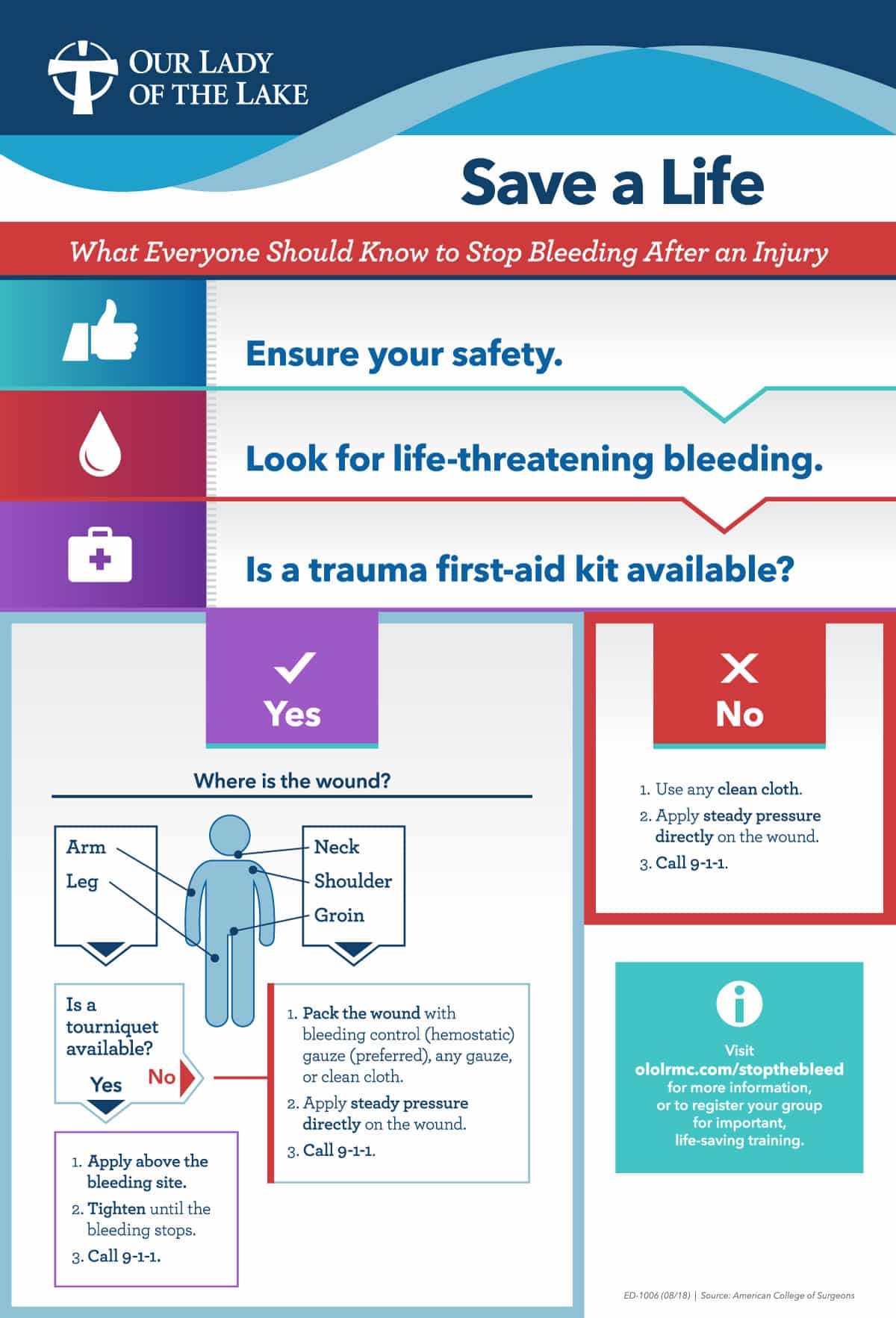The top cause of preventable death in trauma is bleeding, and approximately 20 percent of people who have died from traumatic injuries could have survived if someone near had been able to provide quick bleeding control.

According to the American College of Surgeons (ACS) Committee on Trauma, the most important steps to follow when encountering a bleeding emergency are as follows:
1. Ensure your own safety.
It is important to make sure you are safe before helping someone else. If you become injured, you will not be able to help the victim.
2. Look for life-threatening bleeding.
Find the source of the bleeding and remove any clothing that may be covering it. Look for blood that won’t stop coming out of the wound, clothing or bandages that are soaked with blood, loss of all or part of an arm or leg, or bleeding in a victim who is confused or unconscious.
3. Compress and control.
If you do not have a trauma first aid kit, apply direct pressure on the wound with any clean cloth. If the wound is large and deep, try to stuff the cloth down into the wound. Be sure to apply continuous pressure until relieved by medical responders. If a tourniquet is available, wrap the tourniquet around the bleeding arm or leg about two to three inches above the bleeding site, pull the free end of the tourniquet to make it as tight as possible and secure the free end, and twist or wind the windlass until bleeding stops. Once it has been secured, note the time of application to communicate to first responders.
In an effort to help prepare our community members who might find themselves in a position to help someone who has been injured, Our Lady of the Lake Trauma Team provides hands on skill training at no cost to schools, businesses, churches and organizations on how to properly apply tourniquets to “Stop the Bleed” and help save lives.




